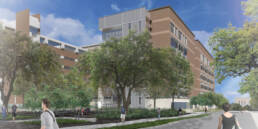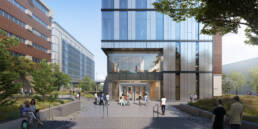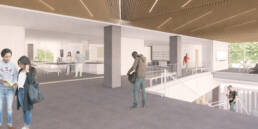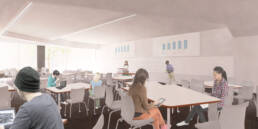With world-class petroleum, chemical and mechanical engineering programs, over 20 energy-related research centers and a location in the heart of the nation’s most energy-producing state, The University of Texas at Austin has already firmly established itself as the energy university in the U.S. But, through the years, the only missing piece has been the existence of a cutting-edge facility that can bring the campus together in pursuit of innovative solutions to the energy challenges of the future. Until now.
The Gary L. Thomas Energy Engineering Building (GLT) will help UT Austin build partnerships across Texas, utilize the plentiful resources provided by the nation’s premier energy state and strengthen the Cockrell School’s reputation as a leader in energy education and research.
“When completed, the Gary L. Thomas Energy Engineering Building will set the Cockrell School apart from all the rest,” said Sharon L. Wood, dean of the Cockrell School. “By giving our researchers a truly state-of-the-art experience, we can help them explore new solutions and new frontiers in energy technology. And by involving our students in that research, we can give them the hands-on experiences they need to make an impact on the energy industry immediately after graduation.”
Like the Engineering Education and Research Center (EER), the Cockrell School’s sparkling new hub for innovation and student projects, the 184,000-square-foot GLT is designed not for any one department but for all, encouraging more collaboration among the many disciplines and departments that involve energy. The GLT will function entirely as a multidisciplinary building, making it the first theme-based educational facility on the Texas Engineering campus.
This building will be one of the best of its kind in the country.”
—Gary Thomas
Moreover, the GLT has been tailor-made to suit the specific needs of the energy researchers who inhabit the building over the decades to come.
“At 430,000 square feet, the EER was envisioned as a wide-open canvas that could be whatever you need it to be,” said Alex O’Briant, associate principal at Ennead Architects. “The GLT’s compactness and density, on the other hand, creates a purpose-driven merger of research and teaching. If the EER was about potential, the GLT is about purpose.”





